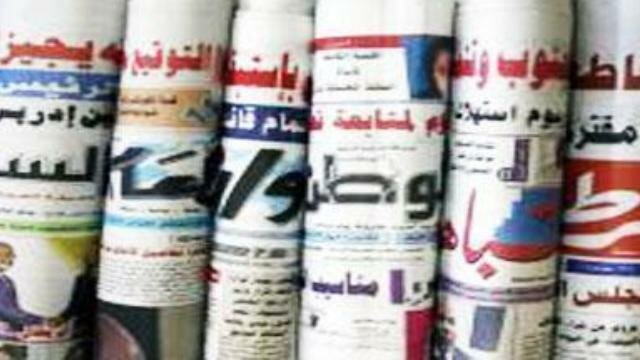Coordination mechanism headed by the First Vice President
The Sudanese Exporter Chamber have proposed a 3 years Vision Plan to increase Sudanese exports to $ 10 billion in years (2018-2020) which will require a $ 3 billion investment.
The initiative was launched on 3 January in Council of Minister’s General Secretariat on the invitation of the Deputy Prime Minister and head of the economic sector and Minister of Investment Mubarak Al Fadil.
The vision-plan aim to increase agricultural and agroindustry’s productivity on the bases of two pillars; horizontal by the expansion in the areas under agricultural and cephalic by increasing the feddan productivity. On the agroindustry sector by adding value to Sudanese agricultural produce these increasing exports volume and value. It will focus on 8 sectors in the framework of the government three years Economic Plan (2018-2020) to increase exports to $ 10 billion by the end of the plan in 2020. The main agricultural produce that will be the focus of the plan are; cotton, sesame, groundnuts, soybeans, sunflower, corn, maize and sorghum in addition to Gum Arabic, vegetables and fruits at the s. Same time livestock play an important role in the vision[F1] plan by increasing the exports of livestock but as well as meat as well as mineral like gold, iron ore and chromium.
The total investment for the plan is estimated at $ 2.926 billion; $ 870 million in 2018, $ 920 million in 2019 and $ 1.126 million in 2020. It expected that if the plan is implemented exports revenues will reach $ 4.7 billion in 2018, $ 7.3 billion in 2019 and $ 10 billion in 2020.
The vision plan included many important recommendations including the formation of a public-private mechanism headed by the First Vice President of the Republic. It also called on the Ministry of Finance to allocate the necessary support vide the development funds in the budget, special policies to encourage small exporters and the revision of the markets and stock exchange laws.
Some of the vision-plan signposts are:
Cotton
The target is to expand cotton planation in the irrigated areas and the rain fed shames to reach an annual production of one million tons. This will be vide contract plantation in the irrigated areas and direct investments in the rain fed schemes. This will be accompanied by an increase in the feddan productivity from 700 kgs at present to 1200 kgs by the use of improved seeds, fertilizers and insecticide.
On the industrialization aspect, the plan is to erect ten ginning plants with a 50 thousand tons capacity on two stages. This will be accompanied by the erection of weaving and textile factories with a 50 thousand tons capacity in the first year 2018 to reach 150 thousand tons by the end of the plan in 2020 in which the exports revenues is estimated to reach $ 1. 36 billion.
Sesame
The target is to increase Sesame feddan production to 300 kgs by the use modern technologies and increasing the cultivated areas to 6 million feddan. Same time erect industrial complexes to treat Sesame seeds for the export of 100 thousands seeds. Same time produce 50 thousand tons of Tahini of which 10 thousand tons are marked for export. This sector export is estimated to reach $ 1.68 billion by 2020.
Groundnuts
A horizontal expansion is planned in the cultivation of groundnuts to 8 million feddan in the irrigated and rain-fed areas. In addition to establishing factories to produce raw oil and refined edible oil. The aim is to export 500 thousands of tons raw oil and 200 thousand tons of edible oil generating $ I billion in export earnings by 2020.
Sunflower
Sunflower to be cultivated in 1.5 million feddan is the plan targeted both in the irrigated and rain-fed schemes for local consumption and exports and productivity to be increased from 500 Kgs to 700 kgs per feddan. The groundnuts factories with some modification will be utilized to produce edible oil from Sunflower and which will start with 100 thousand tons annually and reach 200 thousand by 2020. This will generate a $365 million annually in exports revenues.
Soybeans
The first year in the production of Soybeans according to the plane is estimated to be 500 thousand tons which will increase to 2 million tons by 2020 with a productivity of one ton per feddan in 2018 to increase to 2 tons by 2020.
Livestock
The plan is to erect 10 modern production complexes including feeding farms for fattening 3O thousand calves and 200 thousand sheep five times in the year. In addition to 5 slaughter houses and meet production factories in the livestock production areas to export 100 thousand tons of all kinds of meet annually for a value of $ 505 million yearly. This will be accompanied by leather factories to manufacture the leather of the slaughtered animals generating a $ 400 million income by 2020. The livestock market mechanisms will be changed to adapt to dealing on the base of the livestock weight and the establishment of livestock stock exchange. It is expected that livestock exports will be in the range of $ 1.66 billion by 2020.
Animal Feed
The target in the animal feed sector is the production of one million tons vide the erection of 200 production stations , one third of the production will be utilized locally and the two third for export which is expected to be for the value of $ 380 million in 2020.
Sorghum
The target is the production of 10 million tons by 2020 with a ton per feddan productivity to generate a $ 900 million yearly revenue by 2020.
The plan recommends the replacement of the planation of sorghum with cornflower in the rainfed schemes to produce 500 thousand tons in the first year of the plan to reach 2 million tons by 2020. This will be accompanied with the establishment of 5 animal feeds factories, and another five for the production of starch and glucose to export 1.5 tons for $ 240 million.
Corn
The aim is to address the shortage in local production which is estimated at 3 million tons annually. This will be vide direct investment for a value of $ 500 million in three years to cultivate 500 thousand feddan in the Northern, River Nile, Khartoum and North Kordofan states .
Other sectors
While 5 factories will be erected to produce gum powder to add value to the Sudanese Arabic Gum this will increase the export price by 95 percent. Same time it is estimated that the revenue according to the plan will $ 675 million annually.
While that from the exports of fruits and vegetables will be around $ 800 million annually.
The plan also aim to provide logistic services for the export sector by erection of cellars and cold storages as well as cold trucks and handling equipment’s.
Remarks
There were some important remarks made on the plan vison.
Saud Al Bireir, Businessmen and Employees Federation Chairman Union said that: this is an agricultural development plan accompanied by an agro-industrial plan. Same time draw attention to the importance of assisting the small producers in the traditional mining sector who represent a large portion of this sector.
Wagdi Mahgoub, Chairman of the Exporters Chamber pointed to that this is a vision based on practical experience driven from working in these sectors all over the country in addition to engaged actively in the export sector. It is also based on the concept that active participation in planning is half the solution. He pointed as an example that an investment of $ 50 million in a factory to transfer iron ore to iron save for the country about $ 500 million spent in importing manufactured iron.
He concluded by that the plan aim as well to address one of the biggest challenges in the main agricultural producing sector, the rain-fed sector which is hindered by low productivity.
On the other hand, Mubarak Al Fadal said that this plan is not the private sector initiative but part of the government policy. Adding that funding for the plan will be made available by the national banks, while the Ministry of Investment will discuss with the relevant government institutions the means to address all administrative challenges that may face the plan.
The General Manager of the Sudan Agricultural Bank commented that one of the positive aspects of the plan is the attention paid to the small producers who represent the majority in the rural areas.
The reputable journalist Mohd Latif commented on the plan by commending the participation of the private sector in the plaining and called for the need to benefit form the huge marketing opportunities surrounding Sudan.
Excellent Alternative
The reputable journalist and economist Dr. Khalid Al Tigani wrote in an article published by Elaff economic newspaper that this is an excellent model for a new well prepared vision to address the country economic challenges. Its main merit is that it address the chronic defect in the balance of payment which represented one of the biggest economic challenges for the country. The other positive aspect in the plan is the combination of the agricultural and agro-industrial sector to work in harmony for the best utilization of raw resources which add value to the agricultural production.
-
Our Children Our FutureNext >


